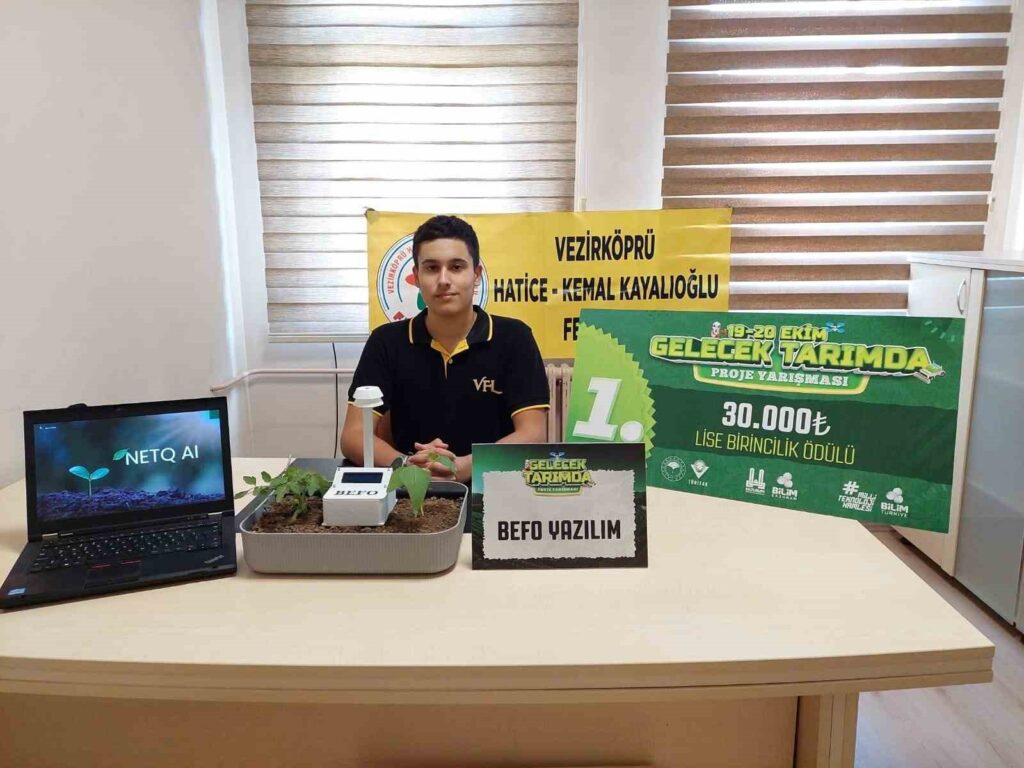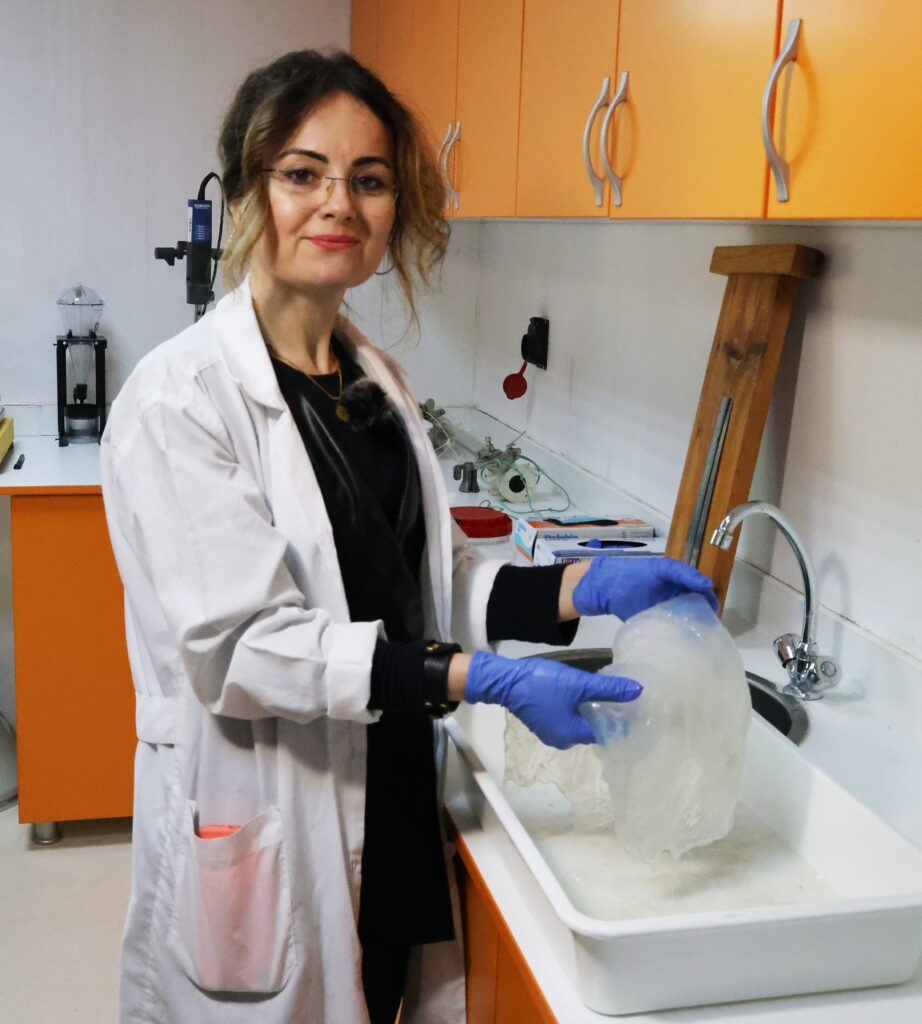TÜRKSAT 6A to be launched into space in the second week of July

- TÜRKSAT 6A to be launched into space in the second week of July
- Minister of Industry and Technology Mehmet Fatih Kacır:
- “With a domestic production rate of 81.4%, the production processes of TÜRKSAT 6A have been completed”
- “TÜRKSAT 6A will be accessible to a population of 4.5 billion”
- “The capability we have achieved has made us one of the 11 countries in the world capable of developing communication satellites on our own”
The first communication satellite developed with domestic capabilities, TÜRKSAT 6A, will be launched into space in the second week of July this year.
Minister of Industry and Technology Mehmet Fatih Kacır inspected TÜRKSAT 6A, the first communication satellite produced with domestic capabilities. Minister Kacır, who examined the TÜRKSAT 6A satellite developed at the Space Systems Integration and Test Center (USET) located at the Turkish Aerospace Industries (TUSAŞ) Kahramankazan campus, announced that the satellite would be sent into space in the week of July 8th. Developed with a domestic production rate of 81.4%, TÜRKSAT 6A satellite has been developed in collaboration with TÜBİTAK, TUSAŞ, ASELSAN, and CTECH companies so far. The satellite, which will weigh over 4 tons, is planned to be placed in a geostationary orbit at 42 degrees east longitude. In this context, the process of placing the satellite into orbit will also be carried out by Turkish teams for the first time.
“Until now, TÜRKSAT has benefited from 8 different communication satellites”
Minister Kacır emphasized Turkey’s realization of a 40-year dream in space technologies, saying, “Late Turgut Özal had established the TÜBİTAK Space Research Institute at the Middle East Technical University (ODTÜ) campus while striving to safeguard Turkey’s orbital rights in space and aimed for this institute to develop Turkey’s satellites. Unfortunately, in the eighties and nineties, we could not make much progress in this regard, but since the 2000s, Turkey has gained significant experience in satellite development. With imaging satellites, joint production projects such as BİLSAT, RASAT, later GÖKTÜRK, and ultimately İMECE satellites, Turkey has become one of the countries capable of developing high-resolution imaging satellites on its own. We launched İMECE into space on the 100th anniversary of our Republic, and we are currently benefiting from İMECE. In terms of communication satellites, TÜRKSAT has benefited from 8 different communication satellites so far. Currently, we continue to use five of these satellites.”
“With a domestic production rate of 81.4%, the production processes of TÜRKSAT 6A have been completed”
Kacır stated that the first national communication satellite project TÜRKSAT 6A has been completed, saying, “We have the opportunity to see the pre-shipment form of the flight model together. During the long working period, all critical subsystems of the satellite were developed domestically. Flight computers, power distribution regulation units were produced domestically, and with a domestic production rate of 81.4%, the production processes of TÜRKSAT 6A have been completed. In this process, 24 types of equipment were installed, and currently, there are 84 different domestic equipment in the flight model we see. Development processes, test processes were entirely carried out here at the TUSAŞ campus at USET, and a total of 396 environmental and functional tests were completed throughout the project.”
“We are preparing to send our satellite into space in the week of July 8th”
Regarding the date of the satellite’s launch, Kacır said, “God willing, we are preparing to send our satellite into space in the week of July 8th. From this moment on, transportation activities will take place. Then, in the approximately 4-week period we call the pre-launch campaign, our teams and SpaceX officials will complete the preparations for the launch together, and hopefully, our satellite will set off to operate at 42 degrees.” Kacır continued his speech as follows: “We will experience another first in this launch. After the launch, our teams will carry out the orbit insertion phase for the first time with our own capabilities. This will also enable Turkey to gain new experience for its moon project. Hopefully, with this launch, we will have gained the experience of transferring our satellite to the orbit where it will operate with the efforts of our own teams. When we talk about TÜRKSAT 6A, we are talking about a satellite weighing 4,250 kilograms, which is much larger and more sophisticated compared to the imaging satellites of about 600 kilograms that we have previously developed domestically.”
“TÜRKSAT 6A will be accessible to a population of 4.5 billion”
Reminding that Turkey will continue its domestic satellite development activities in the coming period, Kacır said, “Until now, TÜRKSAT satellites have had the opportunity to reach a population of 3 billion in 118 countries. Now, with TÜRKSAT 6A, we will also have the communication capability covering Indonesia, Malaysia, and India, which include Southeast Asia. Thus, an additional one and a half billion will be added to the 3 billion world population, and Turkey’s communication satellites will be accessible to the usage of 4.5 billion people, more than half of the world’s population.”
“The capability we have achieved has made us one of the 11 countries in the world capable of developing communication satellites on our own”
Listing the satellite projects for the upcoming period, Kacır said, “In the coming period, the renewal project of the GÖKTÜRK satellite, İMECE 2, İMECE 3 projects will be realized. On the one hand, our teams continue their work for the Moon Project. Turkey will continue its process of nationalization and localization throughout the space science and technology just like in the defense industry. Each of these projects encourages us for the next project. It enables us to gain experience for new projects. In this project, TÜBİTAK, TUSAŞ, ASELSAN, and CTECH teams worked together. At times, this was a project where nearly 400 of our friends worked together. This is also a source of great pride for us. All these institutions, all these companies have gained global experience in this field, and the capability we have achieved has made us one of the 11 countries in the world capable of developing communication satellites on our own. We will continue our claim; with new and more ambitious projects, we will ensure the contribution of our human capital to Turkey’s national projects and we will continue to introduce Turkey to new capabilities and competencies in strategic areas.” During the visit to TUSAŞ, General Manager of TUSAŞ, Temel Kotil accompanied Minister Kacır. After Minister Kacır’s speech, Kotil presented Minister Kacır with a painting of the TÜRKSAT 6A satellite.







